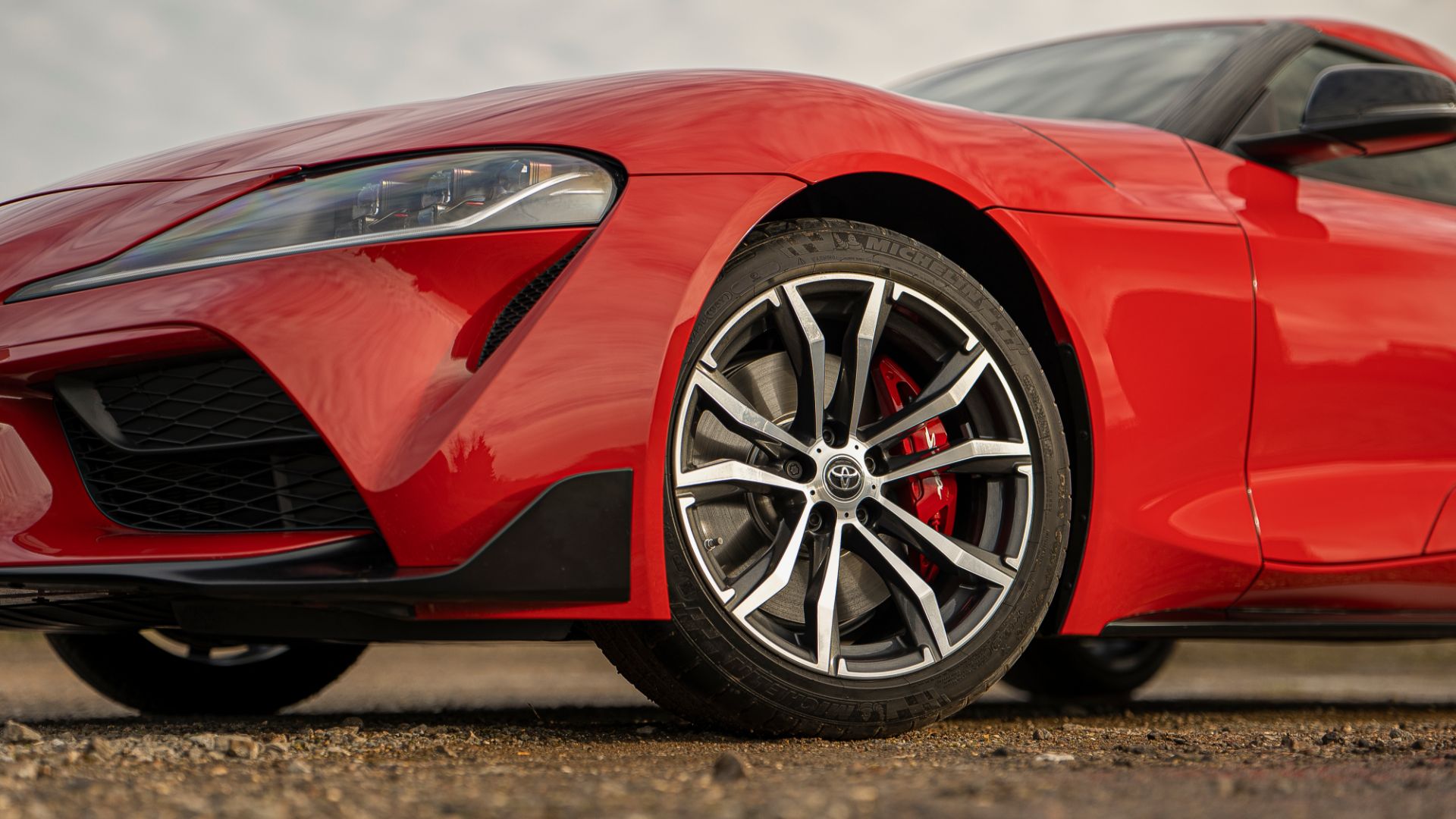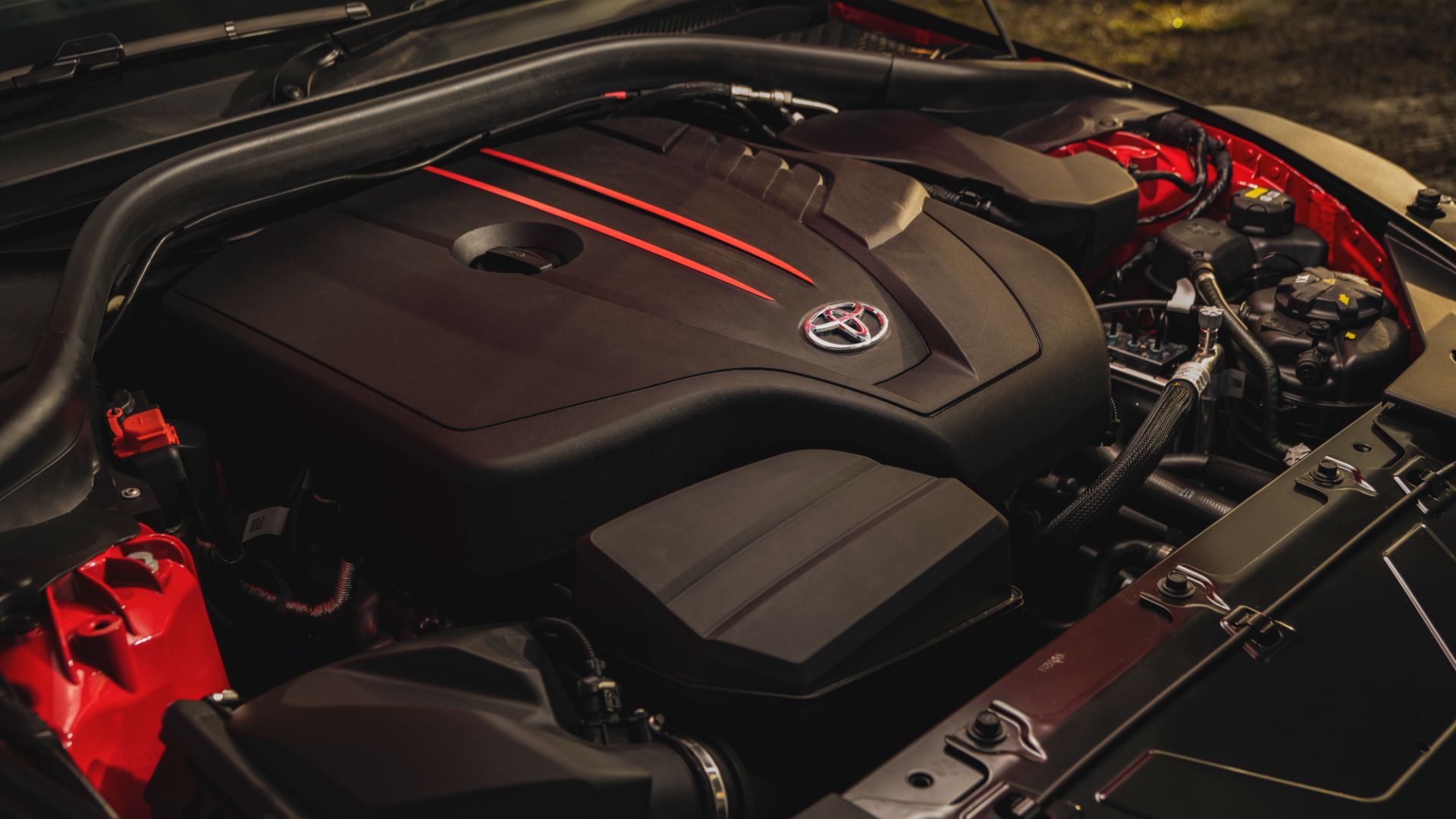
In a year when only essential journeys were permitted, it’s hardly surprising that sports car sales went south.
Car Industry Analysis reports the coupe market slumped by more than a third in 2020, led by the Audi TT (-36%) and Porsche 718 Cayman (-9%). Sales of the Alpine A110 well-nigh fell off a cliff (-70%).
Indeed, of the top 10 cars in this class, only the Toyota GR Supra achieved a modest gain (+9%). Perhaps, after much umming and ahhing, this prompted Toyota to import the Supra 2.0 into the UK.
In theory, a new entry-level model should make the Supra’s upward sales trajectory much steeper. But buying a sports car isn’t a rational decision, and the story isn’t quite that simple.
Pros and cons

Let’s start with the good news. The Supra 2.0 Pro costs £45,995: a not-inconsiderable £8,345 less than £54,340 for the established 3.0-litre version. At 1,395kg, it’s also some 100kg lighter, with nearly all that weight removed from the front axle.
Now the bad news. As well as a litre of engine capacity, the Supra 2.0 also sacrifices two cylinders. Its BMW-derived four-pot serves up 258hp and 295lb ft of torque, versus 340hp and 369lb for its sibling’s straight-six.
How do the cars compare on the road? I spent a week with the Supra 3.0, then the following week with the 2.0, to find out. Yep, being a motoring journalist can be tough…
Scene stealer

Most people will struggle to tell these two Toyotas apart – and not for lack of staring. With its shark-like nose, scalloped sides and distinctive ‘double-bubble’ roof, the Supra has the road presence to rival some supercars.
The main giveaway for a 2.0-litre car is the alloy wheels. Its spidery 18-inch rims are an inch smaller, and have taller tyres to compensate. Look really closely and you’ll also spot 10mm slimmer exhaust tailpipes.
Just delivered: Toyota Supra 2.0 Pro.
Four cylinders and 258hp, versus six and 340hp in the Supra 3.0.
But… it’s 100kg lighter and costs £8,345 less. pic.twitter.com/oSE84yluyN
— Tim Pitt (@timpitt100) February 11, 2021
For millennials raised on Japanese car culture, the Supra also wears one of the coolest badges around. It’s a motorsport legend and icon of the tuning scene, immortalised in movies and video games.
By comparison, the closely related BMW Z4 has about as much credibility as a fluffy steering wheel cover.
No manual option

Fold yourself through the narrow door aperture and the Supra feels low, snug and sporty. Cocooned by a high transmission tunnel, you look out over the long bonnet, its muscular haunches filling the mirrors. Yes, the dashboard and 8.8-inch touchscreen media system are BMW hand-me-downs, but is that a bad thing?
Again, there’s little to distinguish the two Supra models inside. The smaller-engined car has manual seat adjustment, rather than electric, and is part-trimmed in Alcantara, instead of full leather. I actually prefer the mix of materials.
Sadly, this entry-level car isn’t available with a manual gearbox – something that might position it as the back-to-basics drivers’ choice. Your only option is an eight-speed automatic, with small paddles for self-shifting.
Rubber on the road

It isn’t the tyre-smoking street racer of Supra folklore, but the 2.0 certainly isn’t slow. Standstill to 62mph takes a snappy 5.2 seconds (4.3 seconds in the 3.0) and top speed is identical: an electronically limited 155mph.
Maximum torque arrives at just 1,550rpm, so the engine feels tractable and willing to rev. Like its big brother, it’s easily capable of overwhelming cold rear tyres, too.
Nonetheless, the four-cylinder seems slightly coarse and workmanlike after the butter-smooth six. The same can be said for its soundtrack, despite being ‘enhanced’ via the stereo speakers. It’s still preferable to a Cayman’s droning flat-four, mind you – and nothing an aftermarket exhaust can’t cure. But the 3.0 undoubtedly sounds more special.
Muscle and flow

Find a country road you’d expect the tables to turn, with the lighter 2.0-litre car showing off its increased agility. And it does… to a certain extent. The loss of 100kg (roughly the weight of a professional rugby player) makes the Supra keener to turn-in, more adjustable and more confidence-inspiring. It rides slightly better on 18-inch wheels, too.
The difference isn’t game-changing, though. The front-engined Toyota still can’t equal the mid-engined Cayman or A110 for balance and finely tuned feedback. That matters less in the Supra 3.0, which has six brawny cylinders to compensate, but making a case for the 2.0 is trickier.
Indeed, I think the Supra works best when over-engined, like the tuned 450hp Listers version I also sampled last month. As a kind of contemporary muscle car, with a surfeit of grunt over grip, the Supra is brilliant – a spinach-swigging superhero that feels worthy of its cult status. With little more than half that power, its potential seems untapped.
The Cayman question

The Supra 2.0 is a well-sorted sports car. It looks fabulous, goes fast and is comfortable enough to drive every day. It also costs usefully less to buy than the 3.0 version, and is more efficient (38.7mpg vs. 34.4mpg).
It isn’t as sharp or fun to drive as some rivals, though. And if handling is your bag, I suspect the forthcoming, much cheaper Toyota GR86 – replacement for the much-loved GT86 – will tick that box better.
No, if you’re buying a Supra, the 3.0-litre is the one to have. And if your budget doesn’t stretch that far, buy one nearly-new and enjoy the rest of Toyota’s five-year warranty. Or simply buy a Cayman.
ALSO READ:
New Listers Toyota Supra 450hp review
Toyota GT86: Farewell to a modern classic sports car